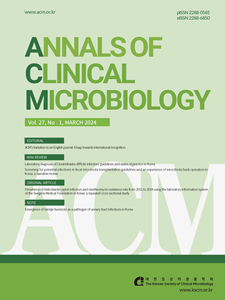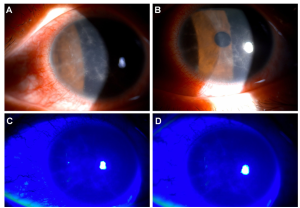Original article PDF Chulhun L. Chang, M.D., Tae Sung Park, M.D., Mi-Na Kim, M.D.*, Nam Yong Lee, M.D.**, Hee-Joo Lee, M.D.***, and Jin-Tae Suh, M.D.*** Department of Clinical Pathology, Pusan National University College of Medicine, Pusan; Department of Clinical Pathology, University of Ulsan College of Medicine and Asan Medical Center, Seoul*; Department of Clinical Pathology, Samsung Medical Center, Sungkyunkwan University School of Medicine, Seoul**; and Department of Clinical Pathology, Kyunghee University College of Medicine, Seoul***, Korea Corresponding to Jin-Tae Suh, E-mail: suhjintae@yahoo.co.kr Ann Clin Microbiol 2001;4(2):108-114.Copyright © Korean Society of Clinical Microbiology. Abstract Background:Since 1997 in which first survey for mycobacterial practices of hospitals in Korea were carried on, changes of practice and concept in mycobacterial testing have been expected because advanced testing methods have been surged for last five-year-period. We purposed to follow-up survey to monitor practices changes, and in addition, situation of quality control. Methods:Questionnaires was composed of




